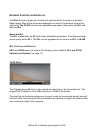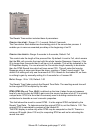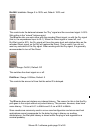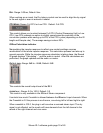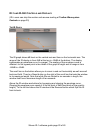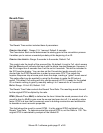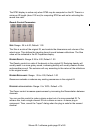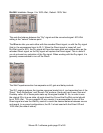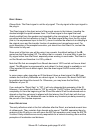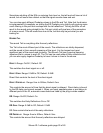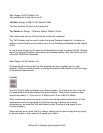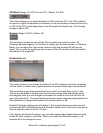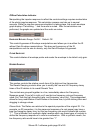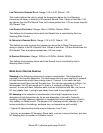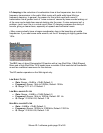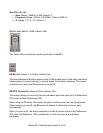D
IRECT SIGNAL
Please Note: The Direct signal is not the dry signal! The dry signal is the input signal to
the plug-in.
The Direct signal is the direct arrival of the sound source to the listener, traveling the
shortest straight-line path between them. The Direct signal is the signal that was
directly emitted from the speaker and recorded by the microphone. It is the input signal
convolved with the first reflection in the IR. The direct signal differs from the Dry signal
(that is, the unprocessed input to the IR-1) since it includes the effects of air damping in
the original room and the transfer function of speakers and microphones used. For
purist simulation of the sampled acoustics, you should turn the Direct On, and set the
Wet control to fully wet.
Since most of the time you will be using it as a reverb, the default setting of the IR-
series has the Direct signal Off. The idea is that in a reverb, it is more likely to use the
Dry signal rather than the Direct, especially when working in send mode. The Direct is
not the Reverb and therefore it is Off by default.
Note that IRs that are sampled from Reverb devices at 100% wet do not have a direct
signal. The IR-series is programmed to auto detect if a direct signal is available or not.
If the imported IR has no direct signal, then the direct signal On/Off control will be
disabled.
In some cases, when importing an IR that doesn’t have a direct signal, the IR-1 may
mistake the first Early Reflection as a direct signal. In this event, the direct On/Off will
be enabled and should be turned On. Otherwise, you may loose the first Early
Reflection of your IR.
If you reduce the “Direct Gain” to “Off”, it will only attenuate that parameter of the IR.
However, if you switch the Direct to “Off” by using its “On/Off” button, the Direct will be
completely cut from the beginning of the IR and the whole IR will be shortened and re-
aligned so that the wet signal is aligned with the latency (the IR will start with the true
direct arrival time). This enables the user to delete any unnatural pre-delay caused by
the pre-roll of the impulse response.
E
ARLY REFLECTIONS
The early reflections start at the first reflection after the Direct, and extend several tens
of milliseconds. They maintain their discrete echo sound. The IR-1 separates them by
analysis of the IR and you can still move the ER/Tail separation point using the ER/TR-
X control. Early reflections are mostly responsible for a natural-sounding room and the
perception of localization and distance.
Waves IR-1 software guide page 24 of 40



